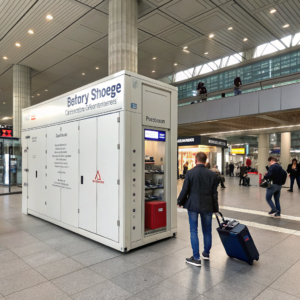How Tilt Angle and Orientation Affect Solar Panel Efficiency?
•
How Tilt Angle and Orientation Affect Solar Panel Efficiency?
Did you know that simply adjusting your solar panel's tilt can increase energy production by 25%? Proper positioning is just as crucial as panel quality for maximizing output.
Optimal solar panel tilt equals your latitude (30° for Los Angeles, 40° for New York), while true south orientation provides the highest energy yield in the Northern Hemisphere.
Understanding these positioning fundamentals can mean the difference between an average system and one that outperforms expectations year-round. Let's explore the science behind solar angles.
What's the Optimal Tilt Angle? Does It Differ by Hemisphere?
Why do solar farms in Canada and Brazil use completely different tilt angles? The sun's path changes dramatically based on your location's latitude.
The ideal tilt angle equals your local latitude (adjust ±15° seasonally), with steeper angles better for winter snow regions and shallower angles optimal in tropical zones.
Tilt Angle Optimization Guide
-
By Season Adjustment Season Adjustment Formula Summer Latitude - 15° Winter Latitude + 15° Year-round Equal to latitude -
Hemisphere Differences Location Optimal Orientation Northern Hemisphere True South Southern Hemisphere True North Equator (0-5°) Horizontal -
Special Considerations
- Snow regions: +10° beyond winter optimal
- High wind areas: Flatter than optimal
- Dual-axis trackers: 99% of optimal yield
Pro Tip: Use NOAA's solar position calculator for precise angle calculations at your exact location.
Fixed vs Adjustable Mounts: Which Is More Efficient?
Are adjustable solar racks worth the extra cost and maintenance? The answer depends on your climate, energy needs, and budget constraints.
Adjustable mounts increase annual yield by 10-25% but cost 30-50% more than fixed systems, making them most cost-effective for off-grid applications or high electricity rates.
Mounting System Comparison
-
Performance Analysis Mount Type Yield Increase Best For Fixed Baseline Grid-tied homes Seasonal Adjust +10-15% Four-season climates Dual-Axis +25-40% Commercial systems -
Cost-Benefit Breakdown Factor Fixed Mount Adjustable Mount Installation Cost $0.15/W $0.20-0.30/W Maintenance Minimal Annual adjustment Payback Period 5-7 years 7-10 years -
Hybrid Solutions
- Manual seasonal adjustment brackets (+5% yield)
- Single-axis trackers (+15-20% yield)
- Retrofit adjustable kits for existing systems
Best Value: Semi-adjustable systems that allow 2-4 manual tilt changes per year.
What If My Roof Faces the Wrong Way? Tech Solutions Explained
Not every roof points south - does that mean you can't go solar? Modern technologies can recover 90% of optimal production from east/west facing roofs.
East-west roof installations using optimized microinverters and bifacial panels can achieve 85-95% of south-facing production, while ground mounts offer complete orientation control.
Suboptimal Orientation Solutions
-
Technology Compensations
- Bifacial panels (+10-15% output)
- DC optimizers (per-panel MPPT)
- Higher efficiency cells (22%+)
-
Installation Techniques Roof Direction Compensation Strategy East/West Split array 50/50 North (NH) Steeper tilt angle Complex angles Custom racking -
Alternative Installations
- Carport systems (full orientation control)
- Ground mounts (ideal tilt/orientation)
- Solar pergolas (aesthetic dual-purpose)
Case Study: A 45° west-facing roof in Portland with bifacial panels and optimizers achieved 92% of optimal south-facing production.
Conclusion
While perfect south-facing at latitude tilt delivers maximum solar efficiency, modern technologies and installation strategies can achieve 90%+ performance from nearly any viable roof orientation.





